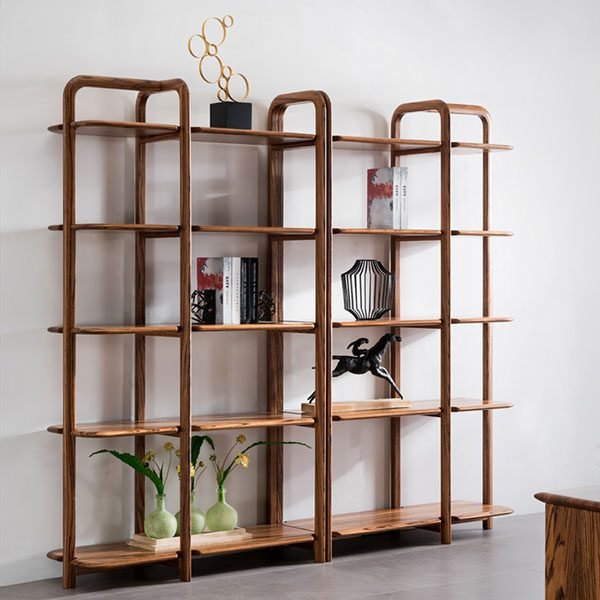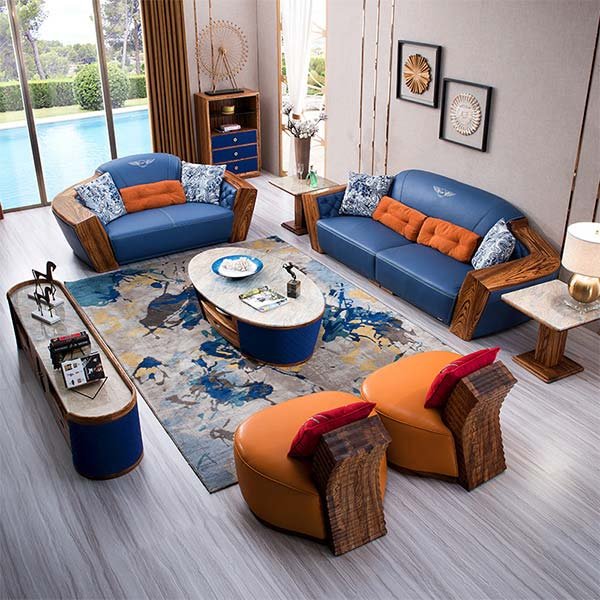“Maximize space, minimize clutter – the key to a cozy small living room!”
Utilize multi-functional furniture
When it comes to organizing furniture in a small living room, one of the most important things to consider is utilizing multi-functional pieces. Multi-functional furniture not only saves space but also adds versatility to your living room layout.
One great example of multi-functional furniture is a sofa bed. A sofa bed serves as both a comfortable seating option during the day and a cozy bed for guests at night. This dual-purpose piece is perfect for small living rooms that double as guest rooms.
Another versatile piece of furniture is a storage ottoman. Not only does it provide extra seating, but it also offers hidden storage space for blankets, pillows, or other items that tend to clutter up a small living room. This helps keep the space organized and free of clutter.
Coffee tables with built-in storage are also a great option for small living rooms. These tables provide a place to set drinks or snacks while also offering storage for books, magazines, or remote controls. This eliminates the need for additional storage furniture, saving valuable space in the room.
Incorporating multi-functional furniture into your small living room layout not only maximizes space but also adds functionality to the room. By choosing pieces that serve more than one purpose, you can create a more efficient and organized living space.
In addition to multi-functional furniture, another key aspect of organizing furniture in a small living room is to prioritize essential pieces. When space is limited, it’s important to focus on the most necessary items and avoid cluttering the room with unnecessary furniture.
Start by identifying the most important pieces of furniture for your living room, such as a sofa, coffee table, and TV stand. These items should be placed strategically to maximize space and create a comfortable seating area. Consider the flow of the room and arrange the furniture in a way that allows for easy movement and access to all areas.
When arranging furniture in a small living room, it’s also important to consider scale and proportion. Choose furniture that fits the size of the room and avoid oversized pieces that can overwhelm the space. Opt for sleek, streamlined furniture that doesn’t take up too much visual or physical space.
To create a sense of openness in a small living room, consider using furniture with legs. This allows light to flow underneath the pieces, creating a more spacious feel. Additionally, using furniture with open shelving or glass surfaces can help maintain an airy and uncluttered look.
By prioritizing essential pieces, considering scale and proportion, and incorporating multi-functional furniture, you can effectively organize furniture in a small living room. With careful planning and thoughtful placement, you can create a functional and stylish living space that maximizes every inch of available space.
Use vertical space effectively
When it comes to organizing furniture in a small living room, one of the key strategies is to use vertical space effectively. In a limited area, maximizing the use of vertical space can help create a sense of openness and prevent the room from feeling cluttered.
One way to utilize vertical space is by incorporating tall bookshelves or storage units. These pieces of furniture not only provide valuable storage space for books, decor, and other items, but they also draw the eye upward, making the room feel taller and more spacious. Additionally, tall furniture can help to balance out the proportions of the room and create a sense of visual interest.
Another way to make the most of vertical space is by hanging shelves or wall-mounted storage units. These can be used to display decorative items, store small items, or even hold plants, adding a touch of greenery to the room. By taking advantage of wall space, you can free up valuable floor space and create a more open and airy feel in the room.
In addition to using tall furniture and wall-mounted storage, another effective way to maximize vertical space is by incorporating multi-functional furniture pieces. For example, a sofa with built-in storage or a coffee table that doubles as a desk can help to make the most of limited space. By choosing furniture that serves multiple purposes, you can reduce clutter and create a more streamlined and organized living room.
Overall, when organizing furniture in a small living room, it’s important to think vertically. By using tall furniture, wall-mounted storage, and multi-functional pieces, you can make the most of limited space and create a stylish and functional living area. With a little creativity and strategic planning, you can transform your small living room into a cozy and inviting space that feels larger than it actually is.
Create designated zones for different activities
When it comes to organizing furniture in a small living room, creating designated zones for different activities can help maximize the space and make it more functional. By carefully planning out where each piece of furniture will go, you can create separate areas for lounging, dining, working, and more.
One way to create designated zones in a small living room is to use area rugs to define different areas. For example, you could place a rug under the seating area to separate it from the dining area. This not only helps visually divide the space, but it also adds a cozy touch to the room.
Another way to create designated zones is to use furniture to create boundaries. For example, you could use a sofa or a bookshelf to separate the living area from the dining area. This can help create a sense of separation between the different zones while still allowing for an open and airy feel in the room.
Additionally, you can use lighting to help define different areas in a small living room. By using different types of lighting, such as overhead lights, floor lamps, and table lamps, you can create a cozy atmosphere in the seating area while also providing task lighting for the work area or dining area.
When organizing furniture in a small living room, it’s important to consider the flow of traffic in the room. Make sure there is enough space between furniture pieces to allow for easy movement throughout the room. You may need to experiment with different furniture arrangements to find the best layout that maximizes space and functionality.
In addition to creating designated zones for different activities, it’s also important to choose furniture that is appropriately scaled for the size of the room. Opt for smaller, more streamlined pieces that won’t overwhelm the space. Consider multi-functional furniture, such as a coffee table with storage or a sofa bed, to maximize space and functionality in a small living room.
When organizing furniture in a small living room, it’s important to keep clutter to a minimum. Consider incorporating storage solutions, such as baskets, shelves, or ottomans with hidden storage, to keep items organized and out of sight. This will help create a more streamlined and visually appealing space.
In conclusion, creating designated zones for different activities in a small living room can help maximize space and make the room more functional. By using area rugs, furniture boundaries, lighting, and appropriate furniture scale, you can create separate areas for lounging, dining, working, and more. Additionally, keeping clutter to a minimum and incorporating storage solutions can help create a more organized and visually appealing space. With careful planning and consideration, you can create a stylish and functional living room that makes the most of your small space.
Заключение
Arrange furniture in a small living room by maximizing space with multi-functional pieces, using vertical storage solutions, and keeping the layout open and uncluttered. Consider using furniture that can be easily moved or folded away when not in use to create a more flexible and functional space.



